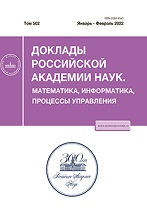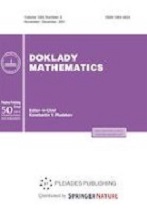|
This article is cited in 2 scientific papers (total in 2 papers)
INFORMATICS
Modeling formation and removal of limescale in water treatment systems
N. I. Tarasov, T. A. Kudryashova, S. V. Polyakov
Keldysh Institute of Applied Mathematics of Russian Academy of Sciences, Moscow, Russia
Abstract:
Modeling the processes of formation and removal of limescale formed in water treatment systems is considered to develop closed-loop technologies. Solid deposits that form over time on the surfaces of heat exchangers damage the heating elements of cleaning systems and neutralize their cleaning function. Various approaches are used to remove sedimentary fractions, but the most effective of them are based on mathematical modeling. In the work, a computational experiment is carried out, reproducing the main stages of water purification from solid impurities. For this purpose, the process of formation of solid deposits on a heating element of complex geometry was studied. The flow modelling is based on the quasi-hydrodynamic model supplemented with convection–diffusion–reaction equations. The performed three-dimensional calculations show the evolution of the heating element contamination, leading to a drop in the efficiency of its heat transfer and a decrease in the quality of cleaning. In addition, the process of restoring the characteristics of the heating element when pumping hydrochloric acid through the system is investigated in the calculations. The results illustrate the reduction of the sedimentary layer on the heating element and the restoration of its cleaning function.
Keywords:
mathematical modeling lime scale formation in water purification systems, quasi-hydrodynamic model, convection–diffusion–reaction equations.
Citation:
N. I. Tarasov, T. A. Kudryashova, S. V. Polyakov, “Modeling formation and removal of limescale in water treatment systems”, Dokl. RAN. Math. Inf. Proc. Upr., 505 (2022), 79–85; Dokl. Math., 106:1 (2022), 279–285
Linking options:
https://www.mathnet.ru/eng/danma282 https://www.mathnet.ru/eng/danma/v505/p79
|


| Statistics & downloads: |
| Abstract page: | 147 | | References: | 37 |
|





 Contact us:
Contact us: Terms of Use
Terms of Use
 Registration to the website
Registration to the website Logotypes
Logotypes








 Citation in format
Citation in format 
